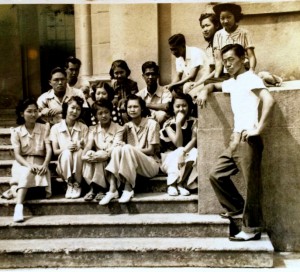This website, Local Citing, features material drawn from the Romanzo Adams Social Research Laboratory (RASRL) Collection at the University of Hawai‘i. Our goal is to draw attention to the student scholars whose work informed the scholarship of eminent sociologists of the era such as William Carlson Smith, E.B. Reuter, and Robert Park. Their writing was especially important to the local sociologists whose work has been the basis of the study of race and ethnicity in Hawai‘i: Romanzo Adams, Andrew Lind, Bernhard Hormann, Clarence Glick, Kum Pui Lai, Douglas Yamamura, Yukiko Kimura, and Jitsuichi Masuoka among others. The materials in the RASRL Collection cover a wide variety of topics – studies of towns and neighborhoods, personal narratives, family history – but nearly all shed light on race and ethnic relations in Hawai‘i. Our intention is to re-introduce the work of these students – the RASRL writers – to a broad audience: students, scholars, members of the general public, especially those who have roots in or are connected to Hawai‘i.
The first project presented here is the companion to an exhibit mounted in the Moir Reading Room at the University of Hawai’i archives. Mapping the Territory: Maps and Papers from the Romanzo Adams Social Research Laboratory Collection features several maps and papers and ephemera from the archives created by the RASRL writers and other researchers from the 1930s and the 1940s. The exhibit will be on display from January 17 to June 30, 2017. You can view Mapping the Territory by clicking on the link at the top right hand corner of this page.
Future posts on this site will feature various documents from the Collection and our annotations and analysis. When possible we will provide information that helps to contextualize the documents, but the purpose of these short essays is to introduce researchers to the depth, breadth, and scope of the RASRL Collection and to encourage others to explore these sources.
Please visit our companion website Thinking Locally where we’ve written about cases of juvenile delinquency, civilian life during World War II, teachers and education, and some of the researchers who contributed to RASRL.
